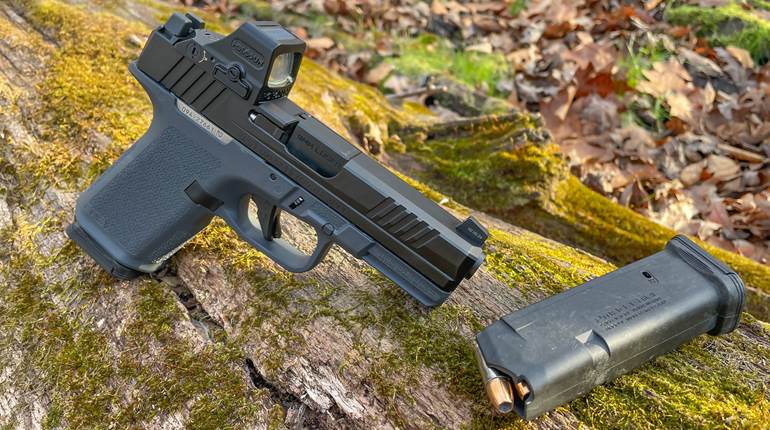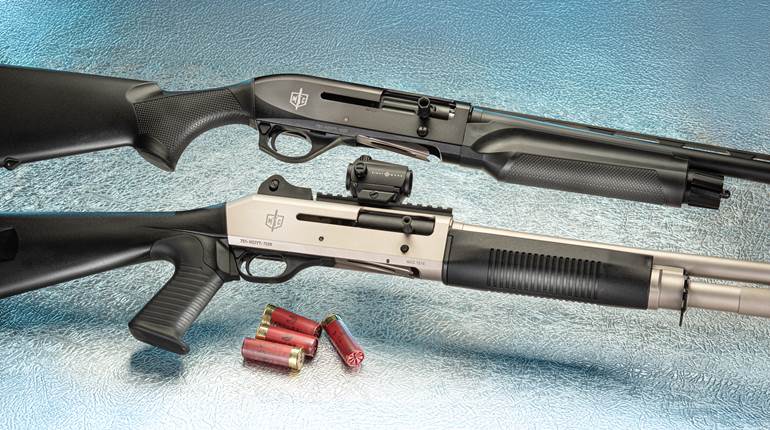
Hodgdon. It’s a name deep-seated within the handloading community; however, each and every day the Shawnee, Kan., company impacts all Americans’ lives in some manner, as well as many other people worldwide.

From humble beginnings as a literal basement business, a propellant powerhouse has arisen that serves dissimilar facets of society. Goex blackpowder, for example, was utilized for special effects in the Hollywood blockbuster series “Pirates of the Caribbean,” and NASA employed H4227 in the NASA Standard Initiator (NSI) pressure cartridges used to break the separation bolts attaching the Solid Rocket Boosters to the space shuttle during the propulsion phase. Many resulting NASA “discoveries” have been adapted for everyday uses in the private sector.
Hodgdon also keeps Americans—both the military and civilians—safe from terrorists hell-bent on doing us harm. Case in point: dissatisfied with the then-current 1,200-yd. “on-paper” performance of the Mk 248 MOD 0 .300 Win. Mag. sniping load, Naval Special Warfare Center-Crane (NSWC) sought an honest 1,500-yd. solution when developing the subsequent round, the Mk 248 MOD 1. Beyond range, though, NSWC demanded decreased wind deflection, minimal muzzle flash and temperature sensitivity from the propellant. Hodgdon H1000 was selected for the task.
Like the Good Samaritan, Hodgdon Powder Co. contributes much to civilization, though often unbeknownst to the general public and without great fanfare. This sentiment is echoed in the company’s mission statement, which reads, “Hodgdon Powder Company operates following Biblical principles to honor God. Our Mission is to provide quality products and services in a manner which enhances the lives of our employees, families, customers and our communities. In doing so, we will deal with integrity and honesty, reflecting that people are more important than dollars and our purpose is to bring credit to our Lord Jesus Christ.”
Not unlike many successful businesses, the story of Hodgdon Powder Co. is one of ups and downs, successes and failures. Through adversity and risk taking emerged an enterprise that has forever changed shooting, hunting, handloading and America.
Risks And Rewards
Uncle Sam is neither thrifty nor cautious with taxpayer money. For Brewster Eltinge Hodgdon, a U.S. Navy veteran of World War II also known as “B.E.” or “Bruce,” America’s wastefulness was a godsend—an untapped opportunity. Hodgdon learned that, after World War I ended, the government discarded surplus propellant into the world’s oceans. Surmising a similar situation would occur after World War II, as well as exhibiting keen foresight about a budding handloading market, Hodgdon inquired into the purchase of leftover stores. His letters went so far as to include the president of the United States, Harry S. Truman. His persistence paid dividends.
In 1947, Hodgdon purchased 50,000 pounds of remnant 4895 propellant at the cost of $0.04 per pound in DeSoto, Kan. Securing the money for the procurement proved to be problematic, as no banks wanted to loan money for such a volatile purchase. A prudent decision evident only in time, Hodgdon borrowed $1,500 against his life insurance policy to get the funds. Of the millions of pounds of government-surplus powders offered through the years for sale, Bruce would eventually buy most of what would be known as H4895, H4831, H4198, H4227, BALL C and many others.
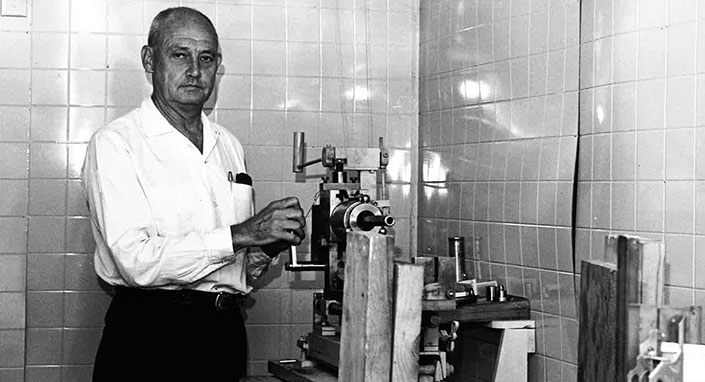
Obtaining the money was only the beginning of Hodgdon’s quandaries. His winning bid wasn’t for a mixed box of “smalls,” but rather 25 tons of highly flammable solids. This begs the question, “Where do you store it?” Hodgdon had 30 days to find an answer. Unsurprisingly, farmers didn’t want to rent Hodgdon vacant barns, so he purchased two railroad boxcars, removed the wheels and set them on railroad ties on leased ground—a temporary arrangement. He would eventually purchase 189 acres, some of which was still utilized as late as 2005.
Next came advertising and distribution. Hodgdon sensibly elected to take the proven path. It’s widely understood in the firearm industry that, for a successful company launch, there’s no better route than American Rifleman magazine and its unparalleled, dedicated readership. His first advertisement was placed in the January 1948 issue, and it immediately generated considerable interest. Hodgdon was now in business.
Initially, Hodgdon charged $0.75, $6.75 and $30 (plus freight) for 1 lb., 10 lbs. and 150 lbs. of propellant, respectively. Given the profit margins, it was a lucrative business. Still, the going wasn’t easy.
Packaging and shipping the propellant were both difficulties. The packaging facility was Bruce and Amy Hodgdon’s basement, with orders being hand-filled by Bruce and his two sons, J.B. and Bob, after school. Chores became secondary. Sizable amounts of propellant for processing were stored there at all times.
Before FedEx, UPS and other large carriers got into business, shipping occurred via the postal service and railways. That wasn’t an easy feat; B.E. Hodgdon fought hard to get the Bureau of Railroads, which would later become the Dept. of Transportation, to permit the shipment of propellant on trains. In addition to transportation, he was instrumental in addressing regulations on storage and packaging of propellant. Perhaps no achievement surpassed getting smokeless powder downgraded to an easier-to-ship “4.1C Flammable Solid” classification.
Thanks to changes aided by Hodgdon, today propellants can be transported in approved containers in amounts weighing up to 8 lbs. and in shipments weighing less than 100 lbs. Most importantly, without Hodgdon’s tireless efforts, common carriers couldn’t transport propellants. It certainly would be a different world.
Big Changes And Difficult Decisions
Hodgdon’s success in selling surplus propellant furthered the handloading industry as a whole. Previously stifled by the efforts of large-scale ammunition manufacturers, which disliked competition, in the post-World War II era enterprising individuals began offering consumers the components they needed to assemble ammunition at home. Besides B.E. Hodgdon, there was Fred Huntington (RCBS), Dick and Vernon Speer (CCI and Speer), Joyce Hornady (Hornady Mfg. Co.), Fred Barnes (Barnes Bullets) and John Nosler (Nosler Partition Bullet Co.), among others. Obviously, Hodgdon offering propellant was a critical part. To advance handloading, many of those individuals also traveled widely together to put on informative handloading clinics.
Unimpeded access to ammunition components and equipment, as well as positive changes in discretionary income after World War II, also led to increased wildcatting. In fact, some of the popular factory cartridges enjoyed today were wildcats originating in the 1950s and ’60s. These include: .243 Win.; .260 Rem.; and 7 mm-08 Rem. A cursory glance at P.O. Ackley’s 1962 and 1966 books, Handbook for Shooters & Reloading: Volume I and II, respectively, revealed the importance of Hodgdon’s propellants for experimenters of the time. Propellants such as 4831, 4198 and 4895 are heavily represented in the load data accompanying the cartridge descriptions.
To ensure that handloaders had reliable data to use with his propellants, Hodgdon personally tested them and developed safe loads. He also extended the lineup; by 1960, the company was selling 11 different propellants.
Despite the initial achievements experienced by the company, there were major setbacks, too. For instance, there was a costly fire in Hodgdon’s retail operation in 1967, and a year later lightning ignited a powder magazine. The 1970s were especially turbulent times; at one point the company teetered on bankruptcy. Ignoring the suggestions of attorneys, the Hodgdons chose to press forward. Some cost-cutting measures employed to salvage the company included: layoffs; liquidating assets; closing sister company B.E. Hodgdon, which sold accessories; driving leased cars; eating at home, not out; and sons J.B. and Bob not collecting paychecks for years at a time.
In 1976, Hodgdon Powder Co. founder B.E. Hodgdon made an important decision; he relinquished control of his business to J.B. and Bob, whom he believed could carry the company forward into further prosperity. Still, Bruce remained chairman of the board for some time. He passed away in 1997.
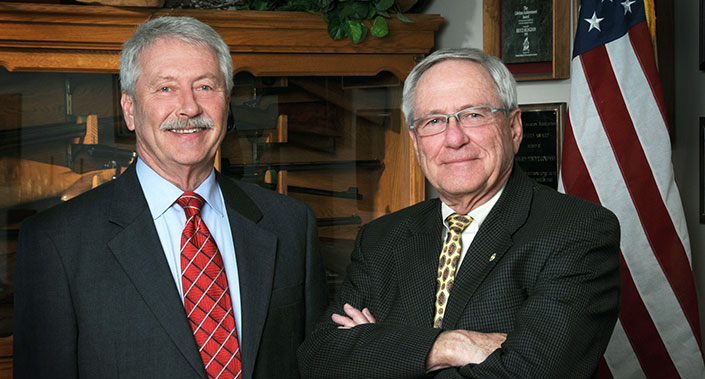
From The Ashes
Ron Reiber, product manager for Hodgdon Powder Co., attributes the company’s success to making powders with properties that no others have. One of the first outside-the-box powders it offered was pyrotechnic deflagrating explosive, or Pyrodex. Co-invented by Dan Pawlak and Michael Levenson, Hodgdon representatives met with Pawlak in 1975 and signed an exclusive distributorship of Pyrodex. Why? Blackpowder, the go-to powder for muzzleloading hunters and re-enactors of the day, was (and still is) highly dangerous to manufacture, store and transport. A direct, volume-for-volume replacement, Pyrodex burned cleaner, ignited easily, offered improved shot-to-shot consistency, and could be more safely produced, kept, and transported. Since it wasn’t classified as an explosive (as is blackpowder), it could be sold in discount stores and gun shops alike—as is the case today. It was a no-brainer move. With much fanfare, Hodgdon introduced the shooting world to Pyrodex in May 1976. Demand for Pyrodex was prodigious; in fact, the company sold 250,000 lbs. the first year—limited only by what Pawlak could deliver.
Unfortunately, on Jan. 27, 1977, Pawlak and three others perished when product at the Washington-based Pyrodex facility flared. Production of Pyrodex subsequently moved to Herington, Kan., where it continues to be made today in a safer, state-of-the-art facility with minimal human interaction. The Pyrodex incident, combined with a product recall and a miserable economy, nearly bankrupted the company; however, in time aggressive cuts and increasing sales of Pyrodex—no doubt due to the surge in modern muzzleloading promoted by the debut of Tony Knight’s MK-85 inline muzzleloader—would ease financial hardships.
From Pawlak and Levenson’s brainchild, Dean Barrett, chief officer at the Pyrodex production plant, created a game changer for convenience in loading inline muzzleloaders: pelletized powder. Introduced in 1996, Pyrodex Pellets consisted of compressed Pyrodex with a smidge of blackpowder on one base to aid ignition (Pyrodex has a higher ignition temperature than blackpowder. A hollow core permitted the pellets to burn from the base forward, outside in, and inside out. With each .50-cal. pellet being equivalent to a 50-gr./vol. charge, a 100-gr./vol. charge required only dropping two pellets down the barrel—convenient. Differing weights and calibers of pellets were subsequently added. Tom Shepherd, then president and CEO, said, “We were selling Pyrodex Pellets like popcorn.”
There was then a flood of new blackpowder replacements from Hodgdon in short order. First came Triple Seven powder, which generated additional energy for higher velocities with the benefit of lacking the rotten egg smell and dirtiness of Pyrodex and blackpowder. Triple Seven would be then pelletized and offered in magnum charges. After its acquisition by Hodgdon in 2003, IMR would introduce White Hots, the only pelletized white, blackpowder replacement. Most recently, Triple Seven has been molded into a different shape, literally; the geometric star-shaped FireStar Pellets are touted as cleaner burning, more efficient and boosting velocities by 50 f.p.s.
Nonetheless, don’t get the impression that blackpowder is dead—it’s not. In fact, after much internal debate, Goex was acquired by Hodgdon in 2009. It’s the only manufacturer of blackpowder in the Americas, as well as the only supplier to the U.S. military. Besides sportsmen, shooters and re-enactors, Goex is heavily used in Hollywood moviemaking and television shows. Some well-known productions that employed Goex for special effects include: “Rambo”; “The Patriot”; “The Last Samurai”; “Pearl Harbor”; and “MythBusters,” among many others.
Reiber’s statement about inequality in propellants is especially apparent in smokeless powders from Hodgdon and IMR, the former DuPont brand that dates to the early 1800s and that Hodgdon acquired in 2003. Clays, for instance, was created by Australian Defense Industries (ADI) to fulfill Hodgdon’s desire for an ultra-clean-burning propellant exhibiting minimal muzzle blast and a consistent burn. Since making its debut in 1991, the propellant has been an unparalleled staple of skeet, trap and sporting clays shooters with its greatest threat emerging recently from a sibling, IMR’s new Red. It’s but one of IMR’s 10 new rifle and shotgun/handgun propellants unveiled during the past decade.
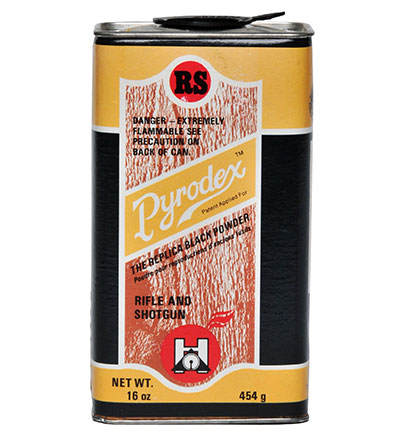
Beyond shotshells, Hodgdon has greatly improved the performance of its (and IMR’s) rifle and handgun propellants. Among the technologies to emerge were temperature-insensitive propellants. Found in Hodgdon’s Extreme series, as well as IMR’s Enduron lineup, the propellants offer consistent velocities across a range of temperatures. Consistency is paramount to top-notch accuracy. That’s why H1000, an Extreme propellant, was selected for the current Mk 248 Mod 1 .300 Win. Mag. sniping round. This attribute began in 1995 with the advent of Varget, which Reiber reports is No. 1 in powder sales. According to Chris Hodgdon, Bruce Hodgdon’s grandson and the company’s public relations manager, a veteran ballistician for ADI named Alistair Wylie was key. All ADI-produced rifle propellants feature the technology.
Additional improvements include a de-coppering additive that removes copper fouling while shooting, as well as a more environmentally friendly composition. Concerning the former, a copper-removing ingredient enhances three propellants in the Hodgdon CFE line, as well as the five options in IMR Enduron series.
But, what happens if a propellant isn’t available that provides optimal performance in a given cartridge? Hodgdon creates one. This is well-illustrated with CFE BLK, which was designed specifically for the .300 Blackout. That being said, it excels in .17 Hornet, 6.8 mm SPC and 7.62x39 mm, too. It’s but one example of Hodgdon’s commitment to providing consumers with thoughtfully designed and tirelessly tested propellants for optimal performance.
How many smokeless propellants does Hodgdon sell today? Combine those from IMR, Hodgdon and Winchester, the latter of which Hodgdon has licensed since 2005, and the company offers 65 different propellants. That doesn’t take into account blackpowder and substitute products, either. “The gunpowder people,” indeed.
Three generations have now served Hodgdon Powder Co. since B.E. Hodgdon founded the company some 70 years ago. During that time, it has experienced many successes and setbacks but remained steadfast in its mission, which resulted in monumental changes to better the experiences of handloaders, hunters, competitors and recreational shooters. In fact, so much has Hodgdon Powder Co. done for the industry that, in 2009, J.B. and Bob received the NRA Publications Golden Bullseye Pioneer of the Year Award for “recognition of exemplary individual achievement and introduction of shooting products that have made a profound and enduring impact on the way Americans shoot and hunt.” I couldn’t have said it better myself.













